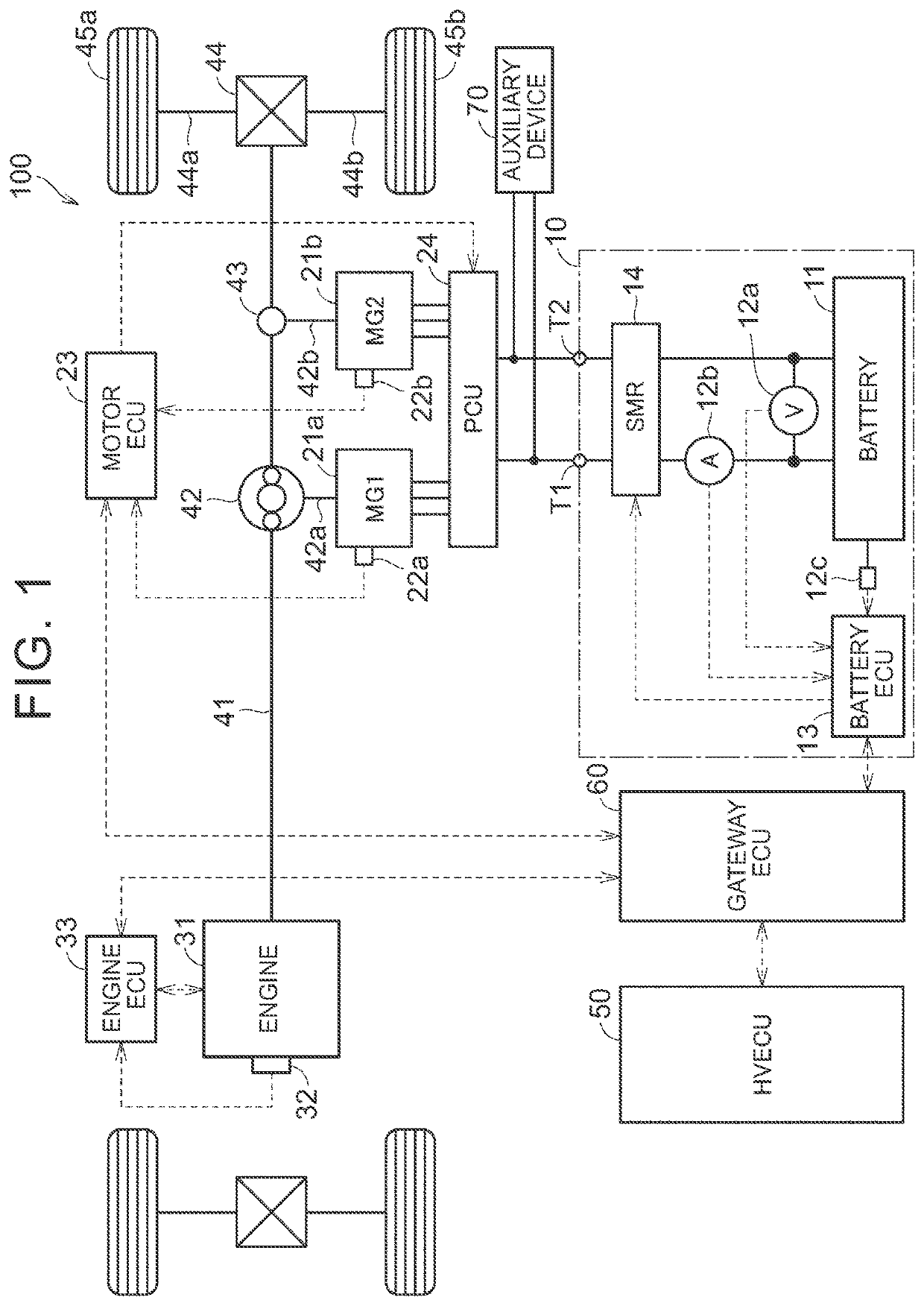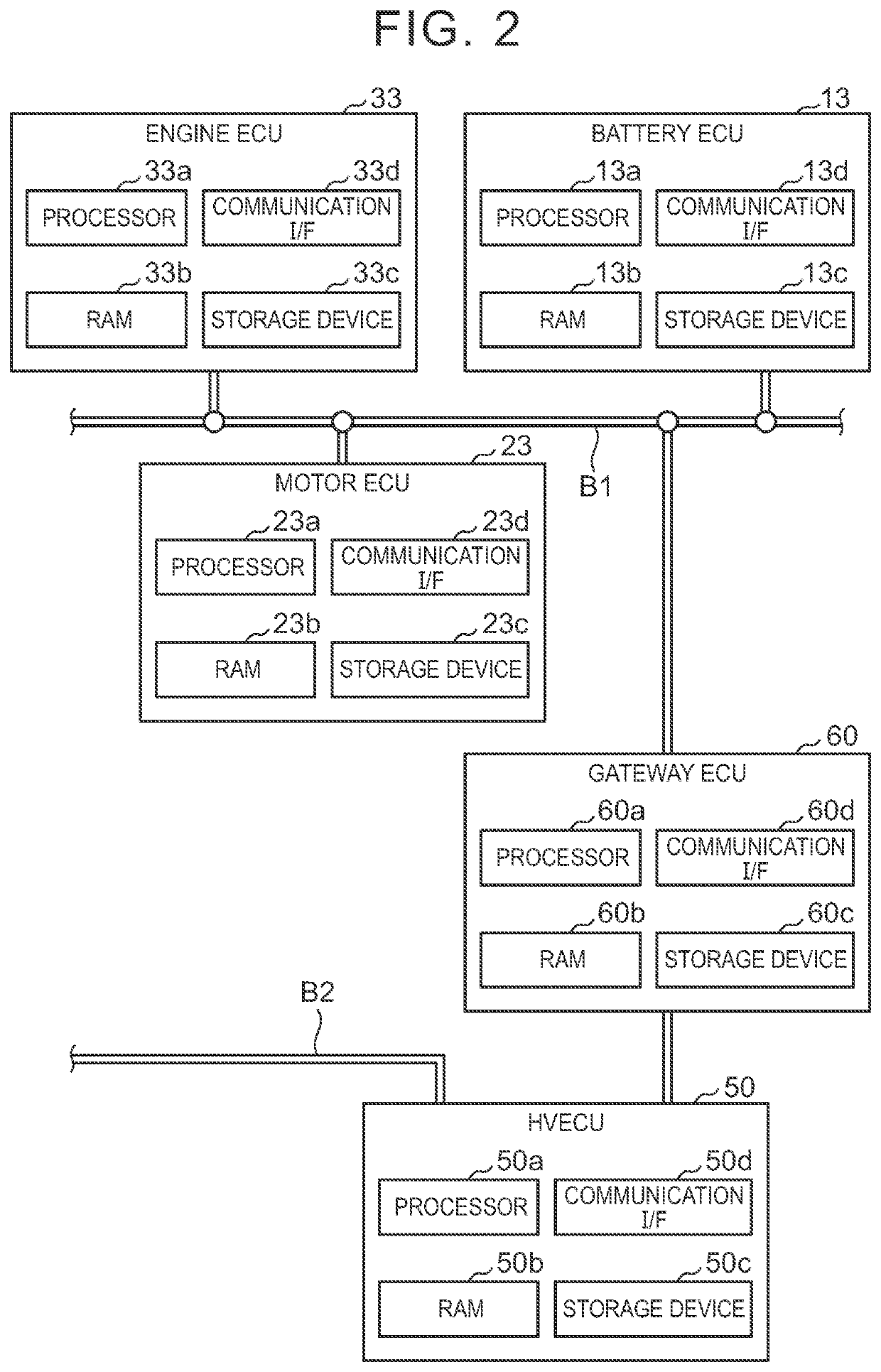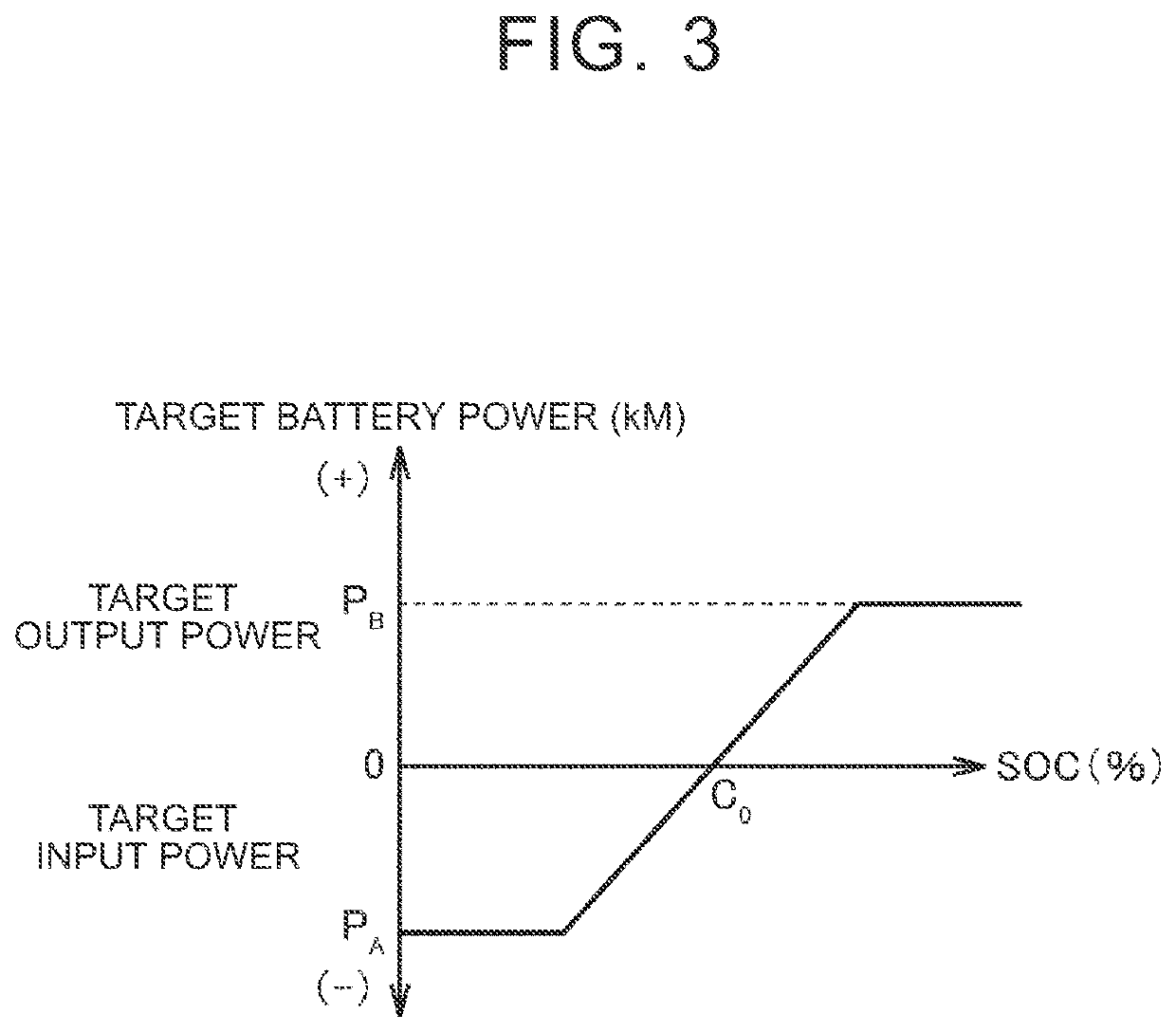Vehicle, vehicle control system, vehicle control method
a vehicle control system and vehicle control technology, applied in the direction of hybrid vehicles, battery/fuel cell control arrangement, transportation and packaging, etc., can solve the problems of large calculation load for conversion, inability to study the combination of power restricting battery pack and current restricting control device, and inability to adopt current restricting battery pack in a vehicle equipped with a power restricting control devi
- Summary
- Abstract
- Description
- Claims
- Application Information
AI Technical Summary
Benefits of technology
Problems solved by technology
Method used
Image
Examples
Embodiment Construction
[0053]Embodiments of the present disclosure will be described in detail with reference to the drawings. It should be noted that the same or corresponding parts in the drawings are denoted by the same reference characters and repetitive description thereof will be omitted. Hereinafter, an electronic control unit is also referred to as “ECU”.
[0054]FIG. 1 is a diagram showing a configuration of a vehicle according to the present embodiment. In the present embodiment, a front-wheel drive four-wheel vehicle (more specifically, a hybrid vehicle) is assumed to be used, but the number of wheels and the drive system can be changed as appropriate. For example, the drive system may be four-wheel drive.
[0055]Referring to FIG. 1, the vehicle 100 is equipped with a battery pack 10 including a battery ECU 13. Further, a motor ECU 23, an engine ECU 33, an HV ECU 50, and a gateway ECU 60 are mounted on the vehicle 100 separately from the battery pack 10. The motor ECU 23, the engine ECU 33, the HV E...
PUM
 Login to View More
Login to View More Abstract
Description
Claims
Application Information
 Login to View More
Login to View More - R&D
- Intellectual Property
- Life Sciences
- Materials
- Tech Scout
- Unparalleled Data Quality
- Higher Quality Content
- 60% Fewer Hallucinations
Browse by: Latest US Patents, China's latest patents, Technical Efficacy Thesaurus, Application Domain, Technology Topic, Popular Technical Reports.
© 2025 PatSnap. All rights reserved.Legal|Privacy policy|Modern Slavery Act Transparency Statement|Sitemap|About US| Contact US: help@patsnap.com



